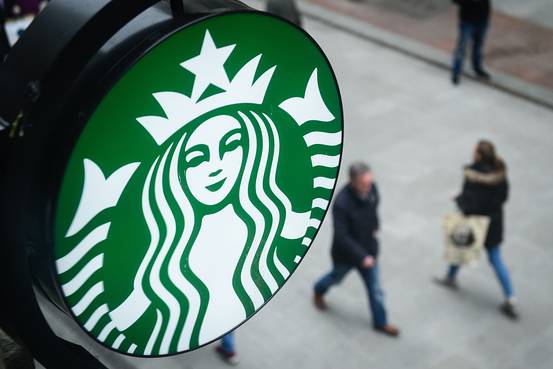WEEKLY ISSUE: Taking a Last Sip from Our Venti Latte as We Head into the Summer
KEY POINTS FROM THIS ALERT:
- We are issuing a Sell on Starbucks (SBUX) shares and removing them from the Tematica Investing Select List.
- We are trimming our position in USA Technologies (USAT) shares, selling half the position on the Tematica Investing Select List and keeping the other half in play to capture any potential additional upside.
- Heading into this week’s Costco (COST) earnings call, our price target is $210.
- Heading into Apples 2018 WWDC event next week, our price target on Apple (AAPL) shares remains $200.
- While we watch for a potential Las Vegas strike, our longer-term price target for MGM remains $39.
- We continue to have a Buy rating and an $85 target for Paccar (PCAR) shares
- With data points confirming a pick-up in business investment, we continue to have a Buy rating and a $235 price target for Rockwell Collins (ROK) shares.
Coming into this shortened week for the stock market following the Memorial Day holiday, we’ve seemingly traded one concern for another. I’m talking about the shift in investor focus that has moved from the pending June 12 meeting between the US and North Korea to renewed concerns over Italy and what it could mean for the eurozone and the euro as well as the overall stock market and the dollar. In last week’s Weekly Wrap, I thought Tematica’s Chief Macro Strategist, Lenore Hawkins, did a bang-up job summing up the situation but as we entered this week it pivoted once again, pointing to the likelihood of new elections that could pave the way for anti-euro forces.
This fresh round of uncertainty led the market lower this week, pulling the CNN Money Fear & Greed Index back into Fear territory from Neutral last week. Not surprising, but as investors assess the situation odds are US stocks, as well as the dollar and US Treasuries, will be viewed as ports of safety. That realization likely means the short-term turbulence will give way to higher stock prices, especially for US focused ones. Multinational ones will likely see a renewed currency headwind given the rebound in the dollar as well as the new fall in the euro.
I’ll continue to keep close tabs on these developments and what they mean for not only our thematic lens, but also for the Tematica Investing Select List. Expect to hear more about this on our Cocktail Investing podcast as well.
Cutting Starbucks shares from the Tematica Investing Select List
Given our thematic bent, we tend to be investors with a long-term view and that means it takes quite a bit for me to remove a company from the Tematica Investing Select List. Today, we are doing that with Starbucks (SBUX) and for several reasons. As I just mentioned above, this multinational company will likely see currency headwinds return that will weigh on its income statement.
At the same time, the company has been underperforming of late in same-store sales comparisons, which have slipped to the low single digits from mid-single digits in 2013-2016. The decline has occurred as Starbucks has reaped the benefits of its improved food offering over the last several quarters, and its new beverage offerings of late have underwhelmed. In the March quarter, if it weren’t for price increases, its same-store sales would have been negative.
While I still go to Starbucks as does the rest of team Tematica, the reality is that we are not spending incremental dollars compared to last year outside of a price increase for our latte or cappuccino. Said a different way, Starbucks needs to reinvigorate its product line up to win incremental consumer wallet share. In the past, the company had new beverages and then the addition of an expanded food and snack offering to deliver favorable same-store comparisons. Now with a full array of beverages, food and snacks, the question facing Starbucks is what’s next?
It’s this question as well as the simple fact that the closure of its stores yesterday to deliver racial tolerance training to its employees will weigh not only on same-store sales comps for the current quarter but hit profits as well. Keep in mind too that we are heading into the seasonally slower part of the year for the company.
Taking stock of Starbucks stock, my view is let’s take the modest profit and dividends we’ve collected over the last 24 months and move on.
- We are issuing a Sell on Starbucks (SBUX) shares and removing them from the Tematica Investing Select List.
Trimming back our position in USA Technologies
Since adding shares of USA Technologies (USAT) back to the Tematica Investing Select List in early April, they have risen more than 50%, making them one of the best performers thus far in 2018. While the prospects for mobile payments remains vibrant and we are starting to see some consolidation in the space, I’m reminded of the old Wall Street adage – bulls make money, bears make money and pigs get slaughtered.
Therefore, we will do the prudent thing given the sharp rise in our USAT shares in roughly a handful of weeks – we will trim the position back, selling half the position on the Tematica Investing Select List and keep the other half in play to capture the additional upside. As we do this, we are placing our $12 price target under review with an upward bias. That said, we would need to see upside near $16 to warrant placing fresh capital into the shares.
- We are trimming our position in USA Technologies (USAT) shares, selling half the position on the Tematica Investing Select List and keeping the other half in play to capture the additional upside.
Prepping for Costco earnings later this week
After the market close on Thursday (May 31), Costco Wholesale (COST) will report its latest quarterly earnings. Consensus Wall Street expectations are for EPS of $1.68 on revenue of $31.59 billion.
Over the last several months, the company’s same-store sales show it gaining consumer wallet share as it continued to open additional warehouse locations, which sets the stage for favorable membership fee income comparisons year over year. Exiting April, Costco operated 749 warehouse locations around the globe, the bulk of which are in the U.S. and that compares to 729 warehouses exiting April 2017. The number of Costco locations should climb by another 17 by the end of August and paves the way for continued EPS growth in the coming quarters.
- Heading into this week’s earnings call, our price target is $210 for Costco (COST) shares
Updates, updates, updates, updates
Apple (AAPL)
Connected Society
Next Monday Apple will hold its 2018 World-Wide Developer Conference (WWDC), which historically has been a showcase for the company’s various software platforms. This year it’s expected to feature iOS 12, the next evolution in its smartphone and tablet software. Recently it was hinted that Apple will unleash the full power of Near Field Communication capabilities found in those chipsets, which have been inside the iPhone since the iPhone 6 model.
In my view, this is likely to be but one of the improvements shared at the event. Those hoping for a hardware announcement are likely to be disappointed, but we never know if we’ll get “one more thing.”
- Heading into next week’s 2018 WWDC event, our price target on Apple (AAPL) shares remains $200.
MGM Resorts International (MGM)
Guilty Pleasure
Quarter to date, shares of gaming-and-resort company MGM have come under pressure but our position in them is down only modestly. I’m putting MGM shares on watch this week following a vote by Las Vegas casino workers to strike when their contract expires at the end of May. I see that vote as a negotiating tactic with dozens of casino and resort operators, akin to what we’ve been seeing emanating from Washington these last few months.
I’ll continue to watch for a potential resolution and what it could mean for margins and EPS expectations. We’ve been patient with MGM shares, but if a strike ensues I’m apt to exit the position and fish in more fruitful waters for this investment theme of ours.
- While we watch for a potential Las Vegas strike, our longer-term price target remains $39.
Paccar (PCAR)
Economic Acceleration/Deceleration
Over the last month, shares of this heavy-duty and medium-duty truck manufacturer have traded sideways. According to the most recent data point from the Cass Freight Index, shipment rose just over 10% year over year in April. That sets the stage for a favorable April reading for the American Trucking Associations’s For-Hire Truck Tonnage Index that rose 6.3% year over year after increasing 7.7% in February on the same basis.
At the same time, we continue to hear from a growing array of companies that they are facing rising costs due in part to surging trucking rates. Coca-Cola (KO) recently reported a 20% year-over-year increase in freight expense. Procter & Gamble (PG), Hasbro, Inc. (HAS), Danone SA, and Nestle SA also reported higher transportation costs and Unilever (UL) expects high-single-digit to high-teens increases in U.S. freight costs in the coming quarters. All of this confirms the current truck shortage that is fueling robust year-over-year growth in new orders for medium and heavy-duty trucks. Next week, we should get the May data and I expect the favorable year over year comparisons to continue.
As production rises to meet demand, we see a positive impact on Paccar’s business on both the top and bottom lines. Our $85 price target equates to just under 15x current estimated 2018 EPS, which has crept up by a few pennies over the last several weeks to $5.69 per share vs. $4.26 in 2017.
- We continue to have a Buy rating and an $85 target for Paccar (PCAR) shares
Rockwell Automation (ROK)
Tooling & Re-Tooling
Our thesis on Rockwell Automation has focused on the expected pick-up in business investment and capital spending following tax reform last year. As the March quarter earnings season winds down, data collected by Credit Suisse reveals spending on factories, equipment and other capital goods by companies in the S&P 500 is expected to have risen to $166 billion during the quarter, up 24% year over year. That’s the fastest pick-up in capital spending since 2011 and marks a March-quarter record since Credit Suisse started collecting the data in 1995.
That year over year increase is roughly in line with the year over year increase in March 2018 U.S. manufacturing technology orders according to data published in the U.S. Manufacturing Technology Orders report from The Association For Manufacturing Technology (AMT). For March quarter in full, AMT’s data points to a 25% year over year improvement, which is in line with Credit Suisse’s capital spending assessment.
Based on these prospects, as well as statistics for the average age of private fixed assets that reveal the average age of U.S. factory stock is near 60 years old, it appears AMT’s 2018 forecast that calls for a 12% increase in US orders of manufacturing equipment compared to 2017 is looking somewhat conservative.
I’ve also noticed that over the last several weeks 2018 EPS expectations for Rockwell have inched up to $7.87 per share from $7.79, while 2019 expectations have moved higher to $8.81 per share from $8.73. I see those upward movements as increasing our confidence in our $235 price target for ROK shares.
- With data points confirming a pick-up in business investment, we continue to have a Buy rating and a $235 price target for Rockwell Collins (ROK) shares.




